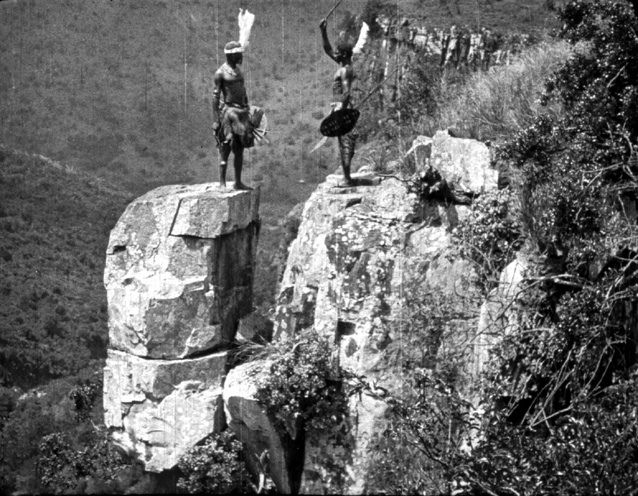Who built Zimbabwe? And why did such an obscure archaeological question be of such lively general interest? … The thesis was that Zimbabwe’s main structure could not have been built later than 1100 B.C. The book was an assault on science called The Ancient Ruins of Rhodesia by two men working with Cecil Rhodes. It created a sensation in the late nineteenth-century….
In some passages of their book, Neal and hall threw away any scientific pretensions and waxed even more romantic than the German explorer Karl Mauch. “A score of ancient scenes are pictured in one’s mind,” they wrote. “The approaching priest with processional chant, the salutation of the emblems of the god, the light of altar fire and torch reflected upon the walls and upon the sacred golden fillet bound around the brows of the priests, the incense laden air, the subdued murmuring of the waiting crowd of worshippers, the mystic rites, dark enchantments, and pious orgies.”

—The Rose of Rhodesia, on the other hand, represented the beginnings of an alternative movie industry to the Schlesinger organization. Harold Shaw Film Productions might have better survived the undercutting of its finances by the postwar flood of Hollywood imports, by using its superior American movie-industry connections for co-productions, rather than tying itself to the British market, as AFP did, with movies based on H. Rider Haggard tales. Moreover, by basing himself on the periphery in Cape Town and taking “Rhodesia” as the subject of his first major independent movie, Harold Shaw showed that he had a regional Southern African perspective rather than a narrow South Africanism based on Johannesburg.—click image for source…
The book was not merely a popular success. On the strength of it, Hall was made a fellow of the Royal Geographical Society and traveled around England lecturing to learned gatherings on the subject of mystic rites and pious orgies. Meanwhile, other self-professed antiquarians hastened to their desks and to speaker’ lecterns to cash in on the Rhodesian vogue with romantic theories of their own. According to one, a phallic cult was known to have existed in southern India some four thousand years ago, and its members were the only logical builders of Zimbabwe’s tower.
![---Great Zimbabwe The first Europeans travelers to set their eyes upon the great Zimbabwe said: “Among the gold mines of the inland plains between the Limpopo and Zambezi rivers [there is a]…fortress built of stones of marvelous size, and there appears to be no mortar joining them…click image for source...](/wp-content/uploads/2013/01/zimbabwe7.jpg)
—Great Zimbabwe
The first Europeans travelers to set their eyes upon the great Zimbabwe said:
“Among the gold mines of the inland plains between the Limpopo and Zambezi rivers [there is a]…fortress built of stones of marvelous size, and there appears to be no mortar joining them…click image for source…





 COMMENTS
COMMENTS